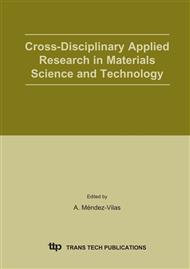p.53
p.59
p.65
p.71
p.77
p.81
p.89
p.95
p.101
Temperature of Formation Studies for LiMn1.5Ni0.5O4 Using X-Ray Diffraction
Abstract:
The objective of this paper is to show that annealing lithiated transition metal oxide (LTMO) precursors obtained by the sol-gel method at insufficiently high temperatures may not produce the intended pure cathode active materials required in lithium batteries. In this work, LiMn1.5Ni0.5O4 which is a potential cathode active material in the 5 V-class is prepared by the solgel method. The precursor material was obtained when the solid gel was dried and heated at different temperatures in the range between 200 °C and 900 °C for 4 hours. It was observed that on heating the precursor material at least at 500 °C for 4 hours the material produced was LiMn1.5Ni0.5O4 in the present form as proven by the x-ray diffractogram (XRD). On heating at temperatures below this, the formation of LiMn1.5Ni0.5O4 was uncomplete and at temperatures above 500 °C the intensity of the peak at 2q = 18° decreases. The noise level also increased at temperatures above 500 °C.
Info:
Periodical:
Pages:
77-80
Citation:
Online since:
March 2005
Authors:
Keywords:
Price:
Сopyright:
© 2005 Trans Tech Publications Ltd. All Rights Reserved
Share:
Citation:


